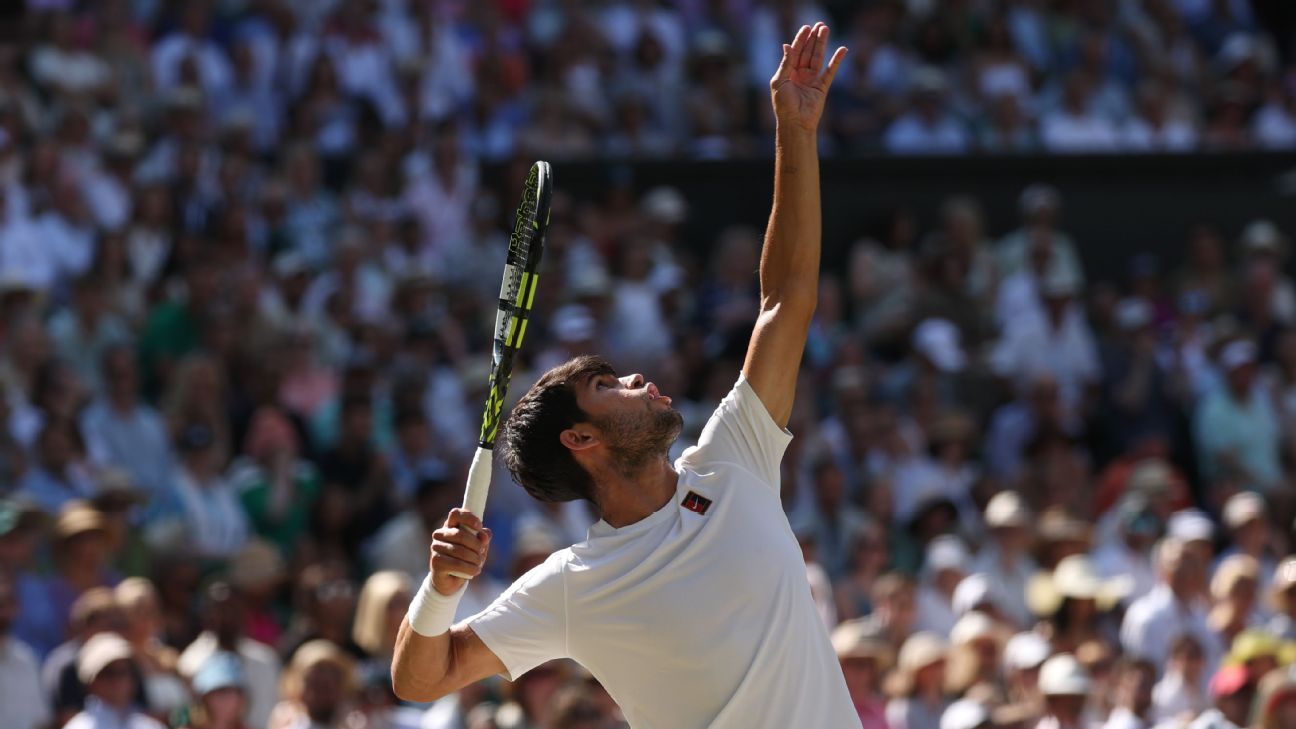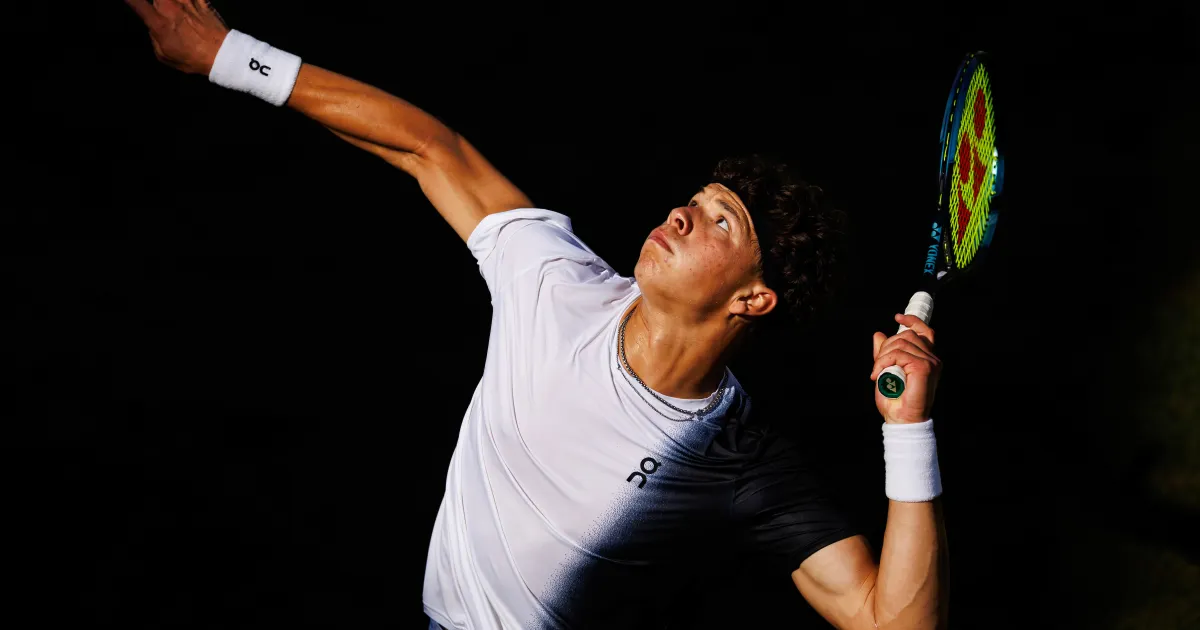WIMBLEDON, England — Carlos Alcaraz, the reigning Wimbledon champion, showcased his remarkable skills as he advanced to his third consecutive final with a hard-fought victory over Taylor Fritz. The match, held on an exhilarating Friday, concluded with Alcaraz triumphing 6-4, 5-7, 6-3, 7-6(6), setting the stage for a showdown against rising star Jannik Sinner.
Alcaraz’s game transcended the traditional baseline rallying, prominently featuring a strategic use of the serve-and-volley tactic, a rarity in today’s game but one he effectively harnessed. “I am just serving really well and feeling comfortable with the serve-and-volley,” Alcaraz commented post-match, revealing that he claimed 16 out of 20 points when employing this approach against Fritz. He emphasized the advantage of this strategy, particularly on grass, saying, “It’s a surface where we can use it more often.”
The serve-and-volley style, which dominated the grass courts for decades, seems to be slipping from the modern player’s playbook. In the late 90s, during the inaugural recording of such statistics at Wimbledon, serve-and-volley constituted 60% of points played in men’s singles. However, by 2025, that figure plummeted to merely 4%. Similarly, in women’s singles, it dropped from 12% in 1997 to a striking 1% today.
Despite the decreased frequency of this tactic, its effectiveness remains intact. As Alcaraz heads into the final, he has successfully executed the serve-and-volley 11% of the time in this tournament, surpassing his peers. His success rate of 79% illustrates its continued viability as a robust weapon in his arsenal.
Throughout this tournament, Alcaraz has increasingly integrated the serve-and-volley into his game. In the quarterfinals, he managed to win 18 out of 20 points when approaching the net, demonstrating a strategic shift aligned with the unique demands of grass-court play.
Novak Djokovic, a seven-time champion, also reintroduced the tactic in his matches, particularly during his semifinal against Sinner, where he managed to serve and volley 23 times with a success rate of approximately 65%. Other players, such as Grigor Dimitrov and Ben Shelton, have similarly shown their prowess with this approach. Dimitrov emerged with a 75% success rate on serve-and-volley points before being forced to withdraw due to injury in the fourth round, while Shelton, applauded by his father and coach Bryan Shelton, showcased a vintage style that melded strategy and athleticism.
The enthusiasm around serve-and-volley isn’t fading away; there are advocates who still believe in its power. Former world No. 1 Pat Rafter, witnessing the matches from the stands, echoed this sentiment, stating, “The grass is still slow, but it’s grass. Not letting the ball bounce creates issues for opponents.” Jordan Thompson, another player who has embraced this strategy, revealed that he utilized serve-and-volley 31% of the time throughout the event, further advocating its potential at Wimbledon.
As the tournament approaches its climax, the return of serve-and-volley as a strategy, when executed effectively, adds a thrilling dynamic to the grass courts, elevating the excitement and unpredictability of matches. With Alcaraz readily embracing this once-endangered style, this year’s Wimbledon could very well mark a resurgence of the serve-and-volley strategy on one of tennis’s grandest stages.



